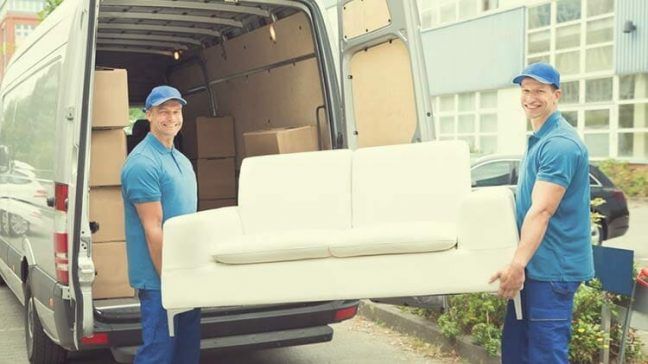Moving guide
6-8 Weeks
This is a great time to begin the details of your move.
Lists
Separate lists by items you plan on moving to your new home or to storage. Will they be handled by the movers or yourself?
Donations
Give away items that you do not need. Consider a garage sale if you have time.
Moving company
Get estimates and discuss costs, packing, timing and other necessary details.
Expense
Maintain a file with important information and receipts since moving expenses are deductible.
Community
Research about the community from the local Chamber of Commerce or Visitor’s Bureau.
Insurance
Transfer medical, property, fire and auto insurance through your insurance agent.
Important Information
Place all of your medical records, prescriptions, vaccination and pet records in a safe place.
4-5 Weeks
Be sure to notify your service providers of your move.
Packaging Materials
Buy packing boxes and materials. Available at all of our storage facilities.
Change of Address
Contact the post office, and complete a US postal change of address form.
Children
Register your child(ren) in their new schools.
Utilities
Notify your service providers of your move. Call ahead and arrange to have utilities disconnected and connected to your new home.
Pets
Find out if there are any specific requirements for pet ownership; and obtain the veterinarian records. Arrange for moving day pet care.
2-4 Weeks
Determine your game plan.
Babysitter
Arrange for a babysitter on moving day if you have young kids.
Plants
Some state laws do not allow moving house plants. Consider giving them to friends or a local charity.
Travel
If traveling by car, you may want to get it serviced prior to your moving day departure.
Packing
Start cleaning, sorting and packing. If renting a storage unit, label the boxes and drop off what you currently don’t need.
Don’t Forget
Clear out anything in basements, attics, closets and safety deposit boxes. Also, collect loaned items to friends.
Disassemble
Take a photo of how your electronics are connected. Back up computer files and disassemble large items.
Hazardous Items
Dispose of flammable items like fireworks, cleaning fluids, matches, acids, chemistry sets and other hazardous items.
1 Week
Last minute details.
Labels
To ensure the safety of your items, label your boxes ‘Fragile’, ‘Load First’, ‘Load Last’ and ‘Do Not Load’.
Movers
Make sure the moving company has the correct address and a phone number to get in touch with you until you reach your new home.
Clean
Empty, defrost and clean your refrigerator at least one day before moving.
Essentials
Pack a separate bag/box with the essentials you need immediately upon arrival. Carry traveler’s checks or cash for quick payments.
Moving Day
Loading Process
Be present, thoroughly inspect the premises and see to it that nothing is left behind.
Lock Up
Turn off all the switches and lock all of the windows and doors.
Movers
There must be someone to direct the movers. The driver must have your name and phone number. Remember to get the driver’s contact info as well.
Be Patient
If you reach your new home before your mover, sign the bill of lading and make sure your new address and phone number are correct.
Unloading
Make sure there are no missing or damaged items using your inventory list. Plan out the placement of major items in your home.
New State
You will need to renew your driver’s license and other legal papers. Locate hospitals, police stations and fire stations near your new home.

How much does Pack cost?
Pack is perfect for people who…
Are moving between 100-250 miles (great pricing compared to others)
Don’t need more than 3 days to load or unload the container
Live in a rural area; Pack has excellent national coverage
Need their items delivered quickly
Pros
Only pay for the space you use
No deposit or initial fees
Fast delivery time frames
Monthly storage available
Nationwide coverage
Online shipment tracking
Competitive pricing on 100 to 250 mile moves
Cons
No local moving options
Tend to be more expensive for cross-country moves
Parking can be a challenge
The 8′ tall freight trailer can be challenging to pack
Only 3 days to load/unload the container
invented the portable storage container in 1998 and has been an industry leader in containerized moving and storage ever since. While their brand name can sometimes come with a higher price tag, their experience performing nearly 4 million deliveries makes them one of the top moving container companies.

Moving Resource Guide
Moving to a new home or rental property can be seen as a dreaded, tedious task. There are so many things to consider: which moving company to use, which items to pack, the type of box to use, how to load the moving truck, and more. If you’re not a professional mover, navigating the logistics of moving can can be tricky.
you’re an experienced mover or not, whether you’re hiring professional movers or taking care of the transition yourself, this Moving Guide help you save time, choose a moving company, consolidate your truck trips, and improve overall efficiency.
Why are you moving?
Whatever the reason, you’ll need to plan accordingly. If, for example, you’re relocating for work, your employer might cover the costs or provide resources to help you transition. Speak with your company to find out your moving allowances and the resources at your disposa
But, if you’re moving to find a new job, you’ll probably need to be cost-efficient as possible. Research your options thoroughly and plan ahead for bumps in the road. And of course, if you’re a college student, you may need to bribe family and friends with pizza to help you (in addition to being frugal when making your moving plans).
Preparation
Regardless of the reason, don’t wait until the last minute to plan. In the months or weeks leading up to a move, it’s essential to form a plan so you’re not blindsided by unexpected costs or issues. Consider the following questions when planning for your move:
How big is your new place compared to the old one? If you’re downsizing, you might have to get rid of some of your furniture or put it in storage. If you’re moving to a larger place, you might need to buy more furniture to fill it up. For more information on choosing the right storage unit.
What utilities and features are included in your new place, and what will you have to compensate for? If you rent, you might be thrown off by an apartment without a dishwasher or a washer/dryer. If you’ve always had a garage and your new home only has a small storage closet, you’ll have to adjust accordingly.
How far away are you moving, and how much do you own? Can you accomplish this move on your own, or will it be necessary to hire a moving company? If you’re moving across the street, chances are you can handle the move on your own. However, if you’re moving across the country, you’ll likely have to hire professional movers.
Answers to All of Your Questions About Moving
has specialized in interstate moving for more than a century. We’re your resource when moving across state lines—otherwise, you can work directly with your local agent. Along the way, we’ve learned what works best, how to help our customers prepare for their move, and what they should expect during the process. The bottom line? Our expert movers make your move a simple and stress-free process.
On moving day, you can relax and leave all of the hard work to the professional movers. When your driver arrives, he or she will conduct an initial walk-through of your home. This is a good opportunity to let the driver know what items will be shipped and which items will stay. This also allows the driver to visualize how your belongings will best fit in the truck.
The driver and his crew will then prepare your house by protecting the floors and doorways. Once loading is ready to begin, the driver will use the inventory form to document the items, and their condition, going on the truck. The driver and his crew will wrap furniture pads (specially designed blankets) around your furniture to protect it from scratches and other damage. Overstuffed furniture (couches, etc.) will be wrapped in stretch wrap to help prevent damage. Once an item is properly protected it will be loaded on the truck.
PLANNING YOUR MOVE
Planning appropriately is essential for your move. The first step is to get a free in-home estimate—after that, you can decide which available services best fit your budget. as much notice as possible before you move. It’s ideal to have us provide an estimate five to six weeks prior to your desired move date.
WORKING WITH A MOVE MANAGER
Your move manager is your point of contact for any questions or concerns about your move. They’ll oversee the process from start to finish—working directly with agents, drivers, loaders, customer service representatives, and you—and they’re are available for consultation at any point during the process. And remember, you can always check out our moving guides and FAQ page for tips and answers to commonly asked questions.
MOVING GUIDE
Self Storage would like to help make your move less stressful. Here is an easy to follow guide to help you with your move. Organizing and preparing weeks ahead of your move will reduce your stress, and it will decrease your chances of overlooking important items
6-8 Weeks Before Moving:
This is a great time to begin the details of your move.
Make a list of items you plan on moving to your new home and items you wish to take to storage.
Make a list of items to be handled by the mover and those you will handle yourself. Dispose of the items that you do not need and consider a garage sale if you have time.
Get estimates from several moving companies.
Research and select a professional moving company. After selecting your mover, discuss costs, packing, timing and other necessary details.
Many moving expenses are deductible. So, maintain a file with important information and receipts for moving related expenses.
If moving to a new community, find out about the schools, parks, recreation, and community programs from the local Chamber of Commerce or Visitor’s Bureau.
Transfer medical, property, fire and auto insurance through your insurance agent.
Place all your medical records in a safe place. Do not forget prescriptions, vaccination, and pet records and other important information
4-5 Weeks Before Moving:
If you are planning to do some of the packing, start collecting moving and packing supplies. Moving supplies are available for purchase at most our storage facilities.
Contact the post office, and complete a US postal change of address form and provide your new address to your telephone company, trash company, cable / satellite, water, electric company, internet provider, insurance companies, banks and financial institutions, clubs, local government agencies and any other utility companies.
Register your children in their new schools. It would be a good idea to involve kids in the moving process. They can help pack their toys and items from their room.
Contact utility companies – electricity, gas, phone and others for disconnection after your scheduled move out. And call ahead to have utilities connected to your new home.
If you have pets make arrangements for transportation. Find out if there are specific requirements for pet ownership in your new township. Also, obtain the veterinarian records.
2-4 Weeks Before Moving:
If you have young children, you might want to arrange for a baby-sitter on moving day to ensure they remain safe during the loading process.
Remember to return library books and anything you have borrowed. Also, collect items you have loaned to friends.
You may NOT want to pack your valuables in the moving van, think about taking them with you.
Plants – some state laws do not allow moving house plants. Plants could be given to friends or perhaps a local charity.
If you are going to travel by car, you may want to get the automobile serviced prior to your departure.
Start packing items you don’t currently need. If renting a storage unit, determine which items go to storage and which items go to your new home.
Don’t forget anything in basements, attics, and closets. Don’t forget about clearing out safety deposit boxes.
Disassemble your computer and back up important computer files. Avoid exposure to extreme temperatures.
Dispose of inflammable items like fireworks, cleaning fluids, matches, acids, chemistry sets and other hazardous items.
1 Week Before Moving:
Make sure your items are labeled: ‘Fragile’, ‘Load First’, ‘Load Last’, and ‘Do Not Load’. This is important to ensure the safety of your items.
Ensure that your moving company knows the correct address and phone number of your new home. If possible, also provide them with an address and phone number to get in touch with you until you get to your new home.
It is important to empty, defrost and clean your refrigerator at least one day before moving.
Make plans flexible, and be prepared in case of delays. Confirm travel arrangements and keep items you will need while the rest of your belongings are in transit.
Pack a box separately with the things you will need immediately upon arriving at your new home. For example- snacks, disposable plates and cups, bathroom items and trash bags.
